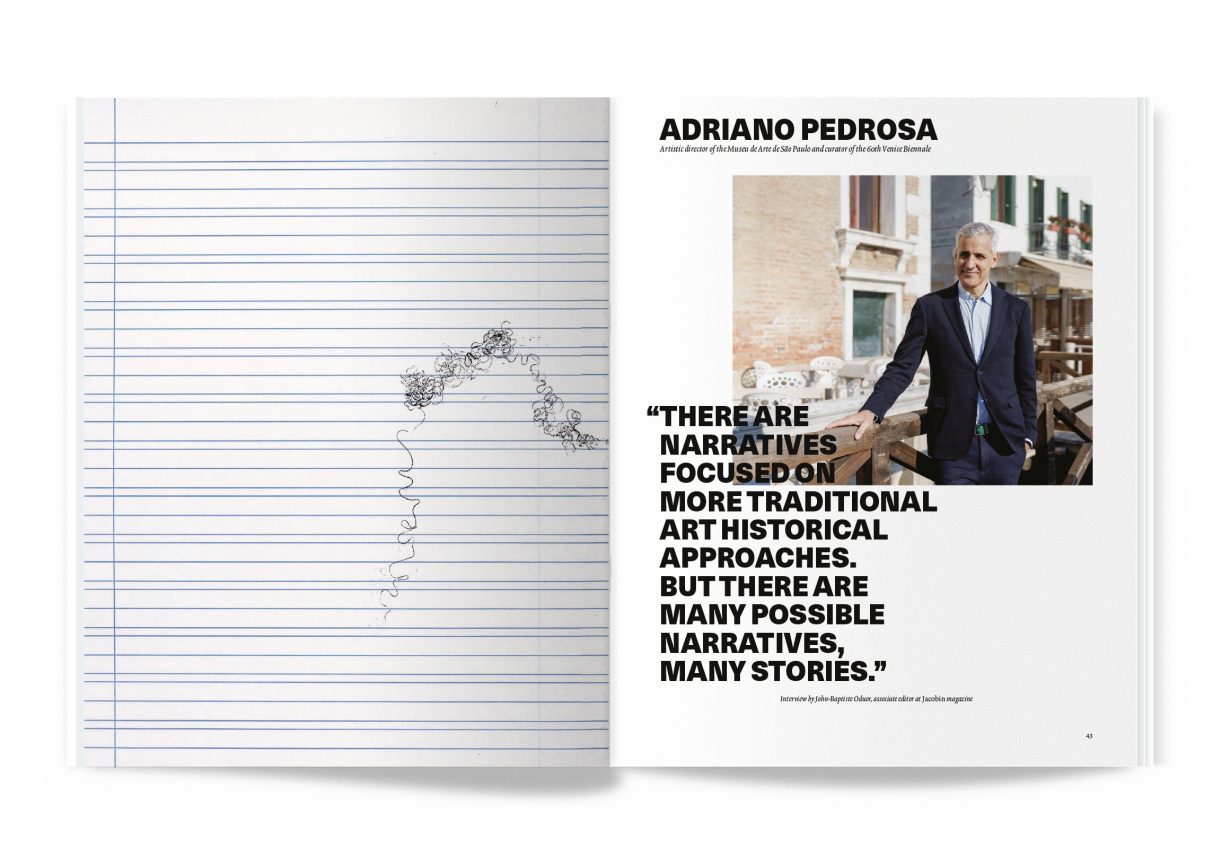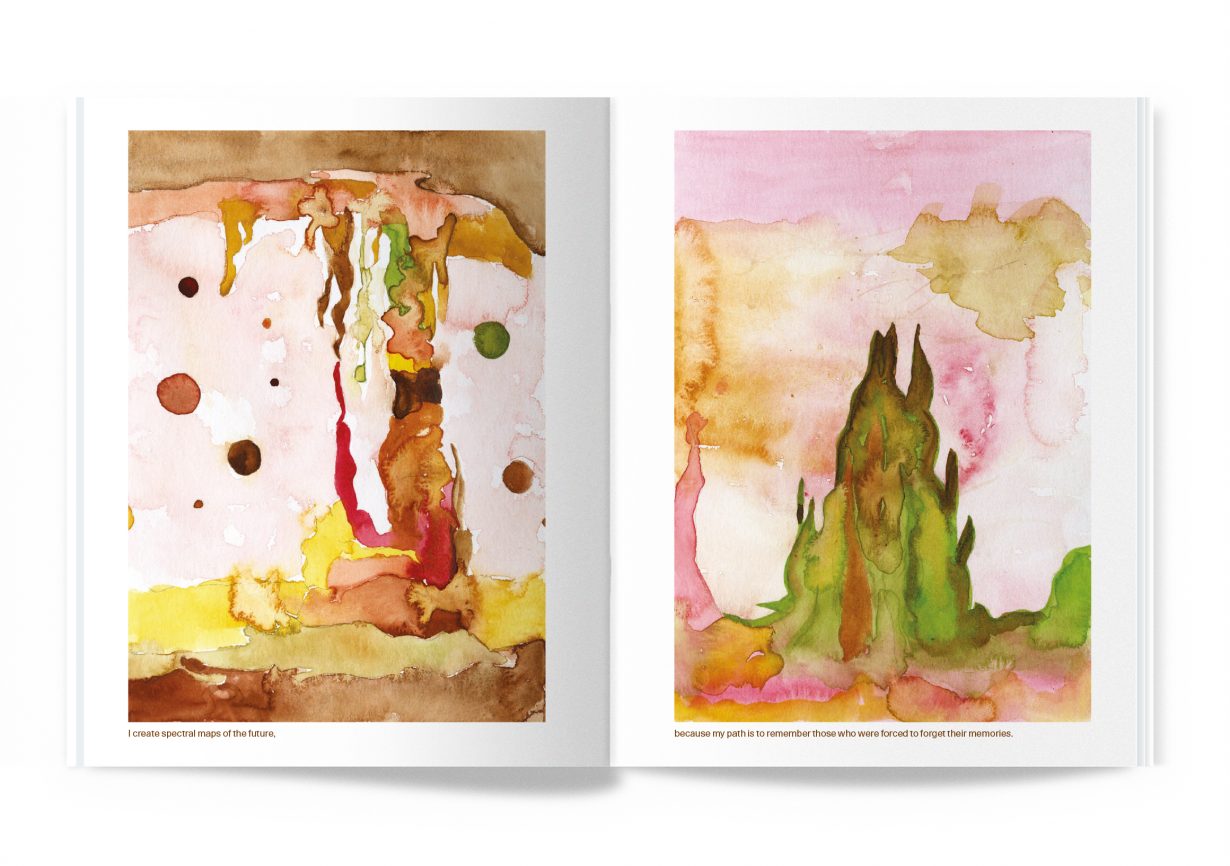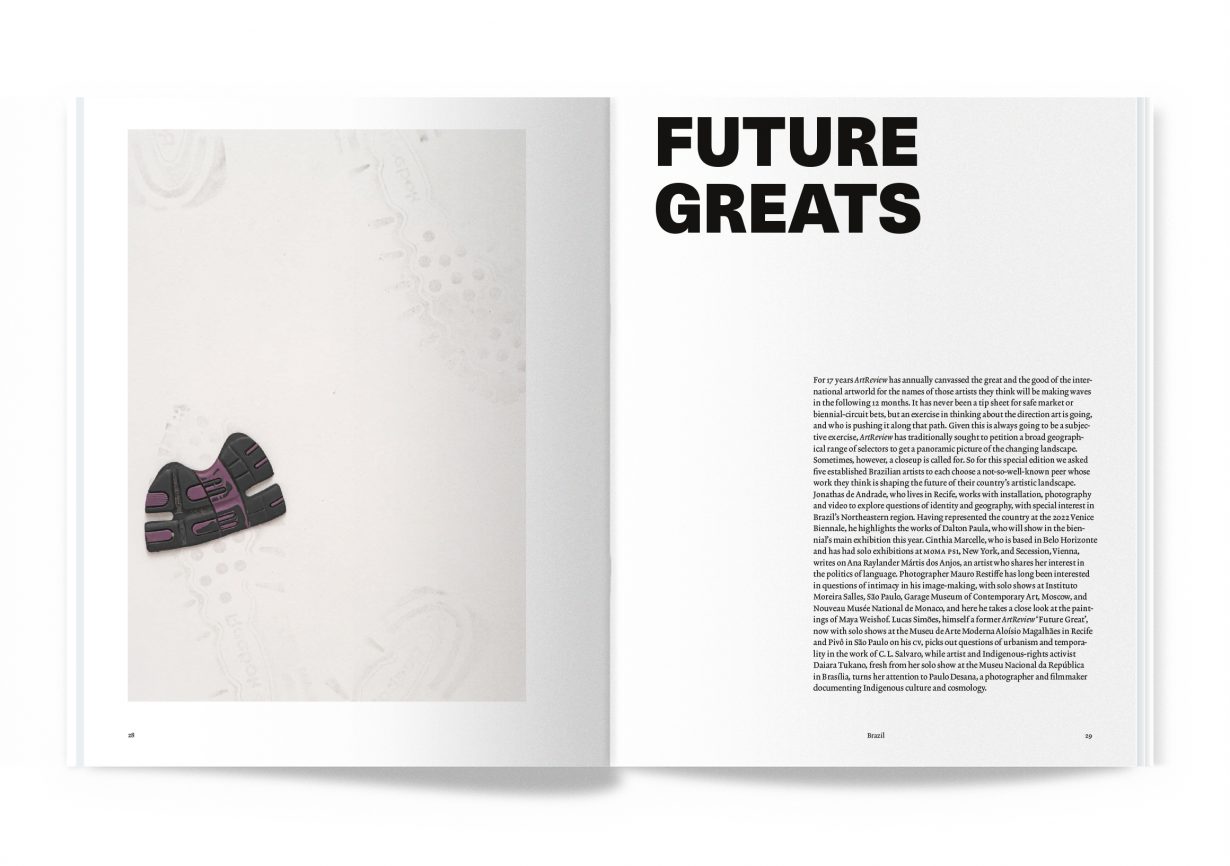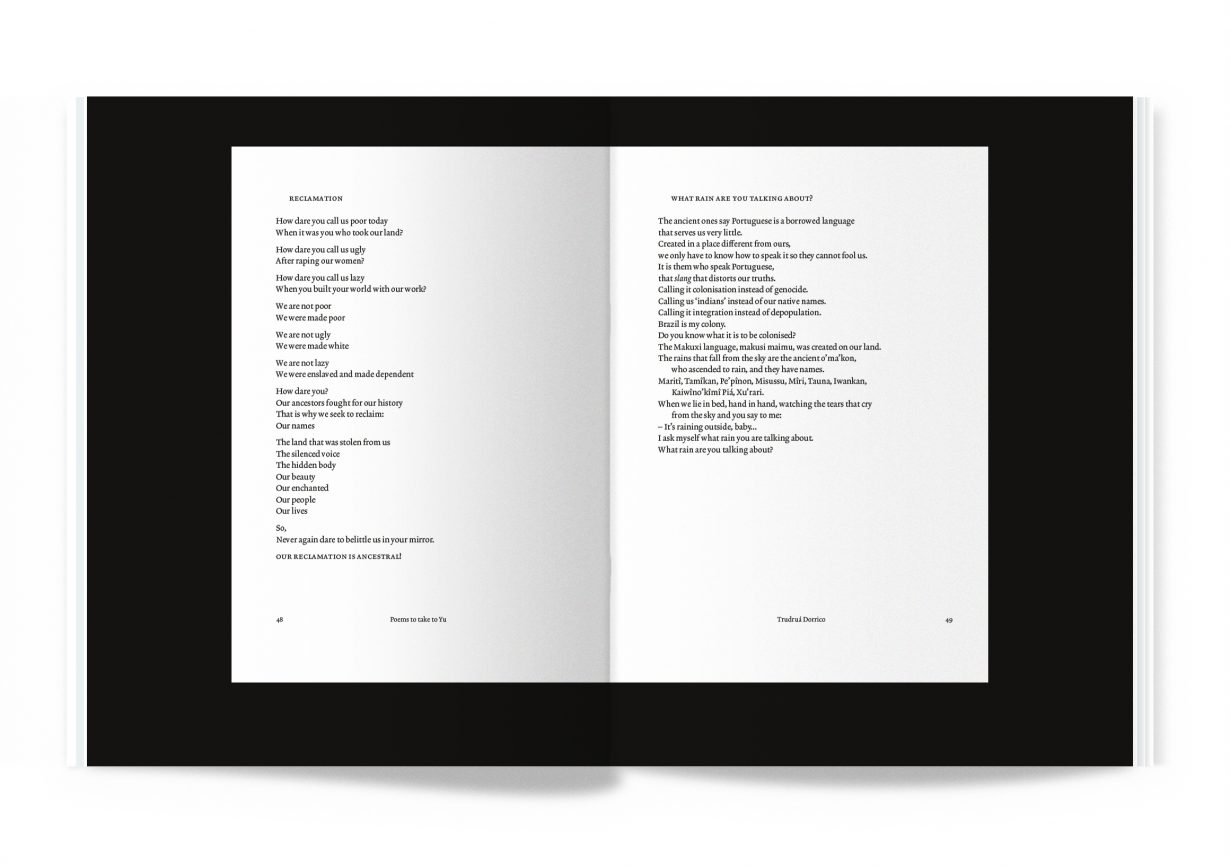Produced with the support of Instituto Guimarães Rosa, this special publication dedicated to Brazilian art will be free with the April issue and distributed at the Venice Biennale

***Subscribe now or get copies from our new online shop***
In 1951, just two years after it was founded, ArtReview published its first article on Brazil, a report that hinged on the inaugural Bienal de São Paulo. ‘The most obvious characteristic of Brazilian cities is a furious determination to be up-to-date,’ wrote the critic Eric Newton. Little has changed in that respect, but in the passing decades attention, both in Brazil and at ArtReview, has spread to art practices beyond São Paulo – a city Newton deemed to have ‘all the symptoms of success’ as well as the ‘metropolitan grandeur’ of Rio de Janeiro – to the rest of the world’s fifth most populous country.
In a special publication dedicated to the country and produced with the support of Instituto Guimarães Rosa, the Brazilian governmental body charged with promoting the country abroad, ArtReview presents an array of voices in contemporary Brazilian art. Curator Raphael Fonseca takes the reader on a journey from the country’s northeast, characterised by its Afro-Brazilian heritage, to the forested west and the Indigenous artmaking that is finally getting recognition on museum and gallery walls (and in Brazil’s pavilion at this year Venice Biennale), to the colder south and the artists working outside the centres of economic and cultural power. Alongside Fonseca’s journey, six artists describe how their home cities – from the colonial-era coastal town of São Luís, Maranhão, to Belém at the mouth of the River Amazon – have inspired their work. In a special Brazil-focused edition of its long-running Future Greats series, ArtReview has asked five artists – including Jonathas de Andrade and Cinthia Marcelle, both of whose work has previously occupied the country’s Venice pavilion – to point readers in the direction of fellow artists who have not yet garnered the attention they deserve.
Reflecting on a new generation of Indigenous figures who are mixing artmaking with land rights and community activism, Daiara Tukano introduces the work of Paulo Desana, whose powerful photography and filmmaking finds political affinity in the poetry of Macuxi writer Trudruá Dorrico, four of whose works ArtReview has translated into English for the first time. Likewise introducing new names to an international audience is Adriano Pedrosa, the Brazilian curator and first Latin American to helm the Venice Biennale. In a feature interview, John-Baptiste Oduor finds out how Pedrosa’s work as director of the Museu de Arte de São Paulo inspired the exhibition in Italy.
Throughout the publication, and extending into a guide of the best exhibitions to see in Brazil and abroad, readers will find a series of specially commissioned artist projects, opening with Sallisa Rosa’s water sculpts the earth, a series of three spectral maps of imagined paths based on her research of the Indigenous routes lost to urbanism and colonialism. Bruno Baptistelli has produced a new series of prints, titled Passos (Steps), in which he overlays his own shoeprint with sneaker soles found near his studio in downtown São Paulo, a neighbourhood with a large unhoused population. The gesture, the artist explains, points to the dialogue that occurs through basic human interactions such as walking the same streets. On the front and back cover of the publication Andréa Hygino contributes two details from Tipos de comer, her 2022 photographic series of self-portraits in which the artist and educator poses with staple foods spelled out in alphabet spaghetti on her tongue – a work that raises questions of economic precarity and who gets to have a voice in modern Brazil. Inside, Hygino has reproduced a new series of prints, Linhas retas, contos espirais (Straight lines, spiral tales), which uses her own hair as part of ongoing research into the Black experience of the public education system. In the final pages, Allan Pinheiro handwrites a letter to his mother – presented here bilingually – telling her how he has become an artist, riffing on questions of who gets to make art and what art is deemed serious.




***Subscribe now or get copies from our new online shop***